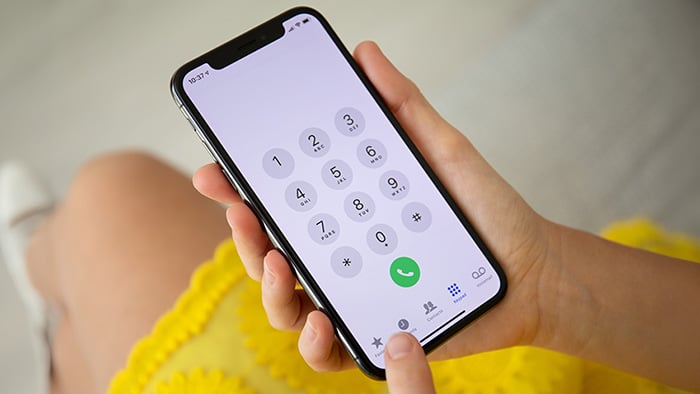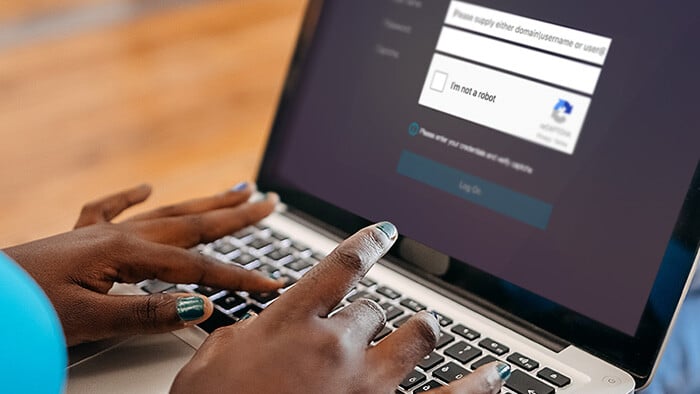1. Talk to your child
No amount of internet safety rules for kids can replace your most reliable tool for keeping kids safe online — talking to your child. Keeping kids safe online begins with knowing how and why they are using the internet and ensuring they’re aware of potential dangers and what to do about them.
Young people are often early adopters of emerging technologies and can quickly navigate and use sites and programs that older people may struggle with or have never even heard of. Recent research by Avast has shown that many parents feel their children have surpassed them in tech knowledge, and this includes Millennial parents.
While you may not keep up with all the latest games, apps, and internet trends, regularly checking in with your child about their online activities is crucial. Similar to discussing their day at school, inquiring about your child's online activity ensures you’re aware of what’s happening in their digital life. It also teaches your child the importance of being open about what they do online.
As with all important conversations with your child, how you discuss online safety should vary depending on their age. For younger children, talk about the importance and value of screen time rules and explain the reasons for them. And talk to your child about what they like to do online, and help them learn how to navigate those interests and preferences. While you may find their favorite games and videos baffling, expressing interest helps foster open communication about their internet use.
As children develop reading and writing skills and start spending unsupervised time online, the discussion should shift to what they can and cannot do online, along with the reasons why. Help them understand the potential dangers, including the consequences of posting online, the concept of digital footprints, and the threat of cyberbullying. And also educate them about online scams, malware, and the risks of sharing personal information.
Encourage your child to talk to you if they come across anything inappropriate or threatening online. Remain calm and non-judgmental if they come to you to ensure they’re not reluctant to share next time.
2. Limit their screen time
Internet safety for kids should include consideration of the effects of digital media use on their health and well-being. The current guidelines recommend no more than 60 minutes of screen time for children under 5 and no more than 2 hours outside of school activities for children 5 and up. However, many parents struggle to follow these guidelines, and the pandemic only exacerbated the issue, with a 17% increase in screen time for tweens and teens between 2019 and 2021.
 While cultural and individual values will shape your family’s decisions around digital media — from the appropriate age for a child to have their own phone to whether or not devices are allowed at the dinner table — setting limits on screen time for kids is crucial for having a say in how much content on the internet kids consume and fostering a healthy relationship with technology. The parental controls discussed below can help you set up screen limits on your child’s device or family computer.
While cultural and individual values will shape your family’s decisions around digital media — from the appropriate age for a child to have their own phone to whether or not devices are allowed at the dinner table — setting limits on screen time for kids is crucial for having a say in how much content on the internet kids consume and fostering a healthy relationship with technology. The parental controls discussed below can help you set up screen limits on your child’s device or family computer.
 Your screen time limits should vary depending on the age of your child.
Your screen time limits should vary depending on the age of your child.
Always maintain open communication with your kids about their social media use. Talk to them about the potential dangers of too much social media use, and let them know it’s okay to delete their Facebook account, get off Instagram, or permanently remove themselves from TikTok.
3. Use parental controls
Computer safety for kids starts with talking to your child and setting rules, but parental controls are an important practical tool for cyber safety and managing screen time for your child.
Parental controls can be set up directly on your child’s Mac or PC, as well as on their phone or at the browser or router level. Parental controls allow you to track screen time and set daily app use limits and content and privacy restrictions. Installing a kids’ web browser is another good option for child safety online.
Here are a few ways to use parental controls to ensure internet safety for your children:
-
Set up password-protected parental controls directly on your child’s device. Parental controls on an iPhone or iPad are primarily accessed through Screen Time settings. Options for parental controls on an Android are slightly more complex but also offer more flexibility.
-
Use a parental monitoring app like Qustodio or Bark to block inappropriate websites and apps on your child’s device, but also monitor their social media, text, and phone interactions.
-
Have your kids use a child-safe browser like Pikluk or KidRex. Your kid can access the web, but the browser carefully filters search results to ensure graphic or violent content is omitted.
-
Teach your child to use Google’s safe visual search engine, Kiddle, which displays only vetted results in an appealing, kid-friendly way.
-
Block sites at the router level to provide network-wide security for your family computer and all connected devices. This is done by using your web browser to access your router's administrative console. Note that this feature is not available for all types of routers.
-
Block inappropriate sites with Avast One. Avast One comes with a default feature called Web Shield that you can use to block specific sites. Web Shield continually scans the data your computer receives from the internet, helping to keep your devices safe from malware, botnets, and other threats.
4. Monitor their activity
Monitoring kids’ online activities is another important tool in your child safety arsenal. Keeping the family computer in a communal area allows you to more easily see the websites they visit. You can also regularly check the browser history to trace their online activities and note if any history has been deleted. If so, it may be time for a conversation.
Once they have their own phone, a parental monitoring app as mentioned above can be installed to keep track of all internet activities kids are engaged in. Some of these apps will alert you if your child tries to access harmful content or uses a certain phrase in their social media and texting exchanges — for instance, “sneaking out” or “don’t tell anyone.”
It’s also important for you to be aware of the social engineering techniques cybercriminals use so you can quickly detect such threats and warn your children about them. Kids, in particular, can be vulnerable to doxxing by hackers or cyberbullies.
5. Review the apps and websites they use
Visit websites like Common Sense Media to read online reviews of digital content to help you determine which apps and websites are safe and age-appropriate for your child. App stores usually have a “Family” category designed to protect young users from unsuitable content, and most well-known digital media companies encourage child internet safety. However, their methods and filters are not foolproof, so be sure to review the content yourself.
6. Know their passwords
When your child is younger, ensure you know the passwords for all websites and devices they use. If your tween is trying to convince you they are old enough to have a social media account, a safety boundary you can set is that they must share their passwords with you.
Internet security for kids includes teaching them about online privacy threats like passwords getting hacked. To keep their social media and email accounts safe:
Cyber safety for kids gets more complex with teenagers. Your older child has a natural need for privacy, so knowing their passwords and carefully monitoring their online activities may no longer be appropriate. At this age, relying on open communication and trust is paramount.
 Knowing your child's passwords while they’re young can help keep them safe online.
Knowing your child's passwords while they’re young can help keep them safe online.
7. Be their friend
To help keep your child safer on sites like Instagram and TikTok, open up an account yourself and “friend” them. The idea may be embarrassing enough to keep them away from social media for a few additional years. Otherwise, it helps you monitor your child’s activities on Facebook and any other site where a stranger could reach out to them or they may be exposed to cyberbullying or other threats.
8. Review their privacy settings
As your kid grows, a lot of their social life may begin to take place in digital spaces. That’s why it’s so important to help them practice secure digital hygiene. Be sure to review the privacy settings on all their social media accounts: check that their Instagram and TikTok accounts are private and that their Facebook updates aren’t visible to strangers.
You can take charge of this process with young children. But with teens, talking to them is key. Discuss what they’re posting about themselves and highlight the dangers of revealing their location, address, and any other personal details. Introduce the concept of cybercrime so that your kids are aware of some of the more serious threats they can encounter online.
9. Be a good role model
The child safety tips we’ve discussed here are important, but the behaviors you model for them will likely have more impact. Try to be a good role model through your own digital life. If you want them to have a balanced relationship with their devices, make sure you limit your own screen time. If you want them to practice good netiquette and be conscientious about what they share online — be sure you’re doing the same.
10. Protect your network and everyone on it with Avast
Keeping your kids safe online can seem like a daunting task, but automated online security software can help. Avast One is an easy-to-use, comprehensive security suite that helps keep your devices clean, block unsafe websites, and protect your home network. Plus, it offers advanced phishing and anti-tracking protection to help block both advertisers and intruders from monitoring and exploiting your kids’s online activities.



 While cultural and individual values will shape your family’s decisions around digital media — from the appropriate age for a child to have their own phone to whether or not devices are allowed at the dinner table — setting
While cultural and individual values will shape your family’s decisions around digital media — from the appropriate age for a child to have their own phone to whether or not devices are allowed at the dinner table — setting  Your screen time limits should vary depending on the age of your child.
Your screen time limits should vary depending on the age of your child. Knowing your child's passwords while they’re young can help keep them safe online.
Knowing your child's passwords while they’re young can help keep them safe online.










